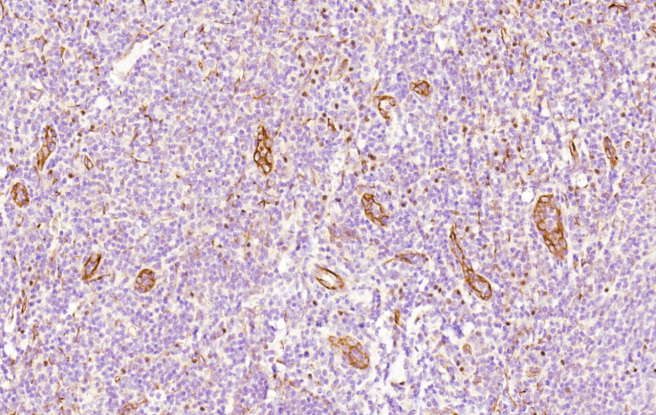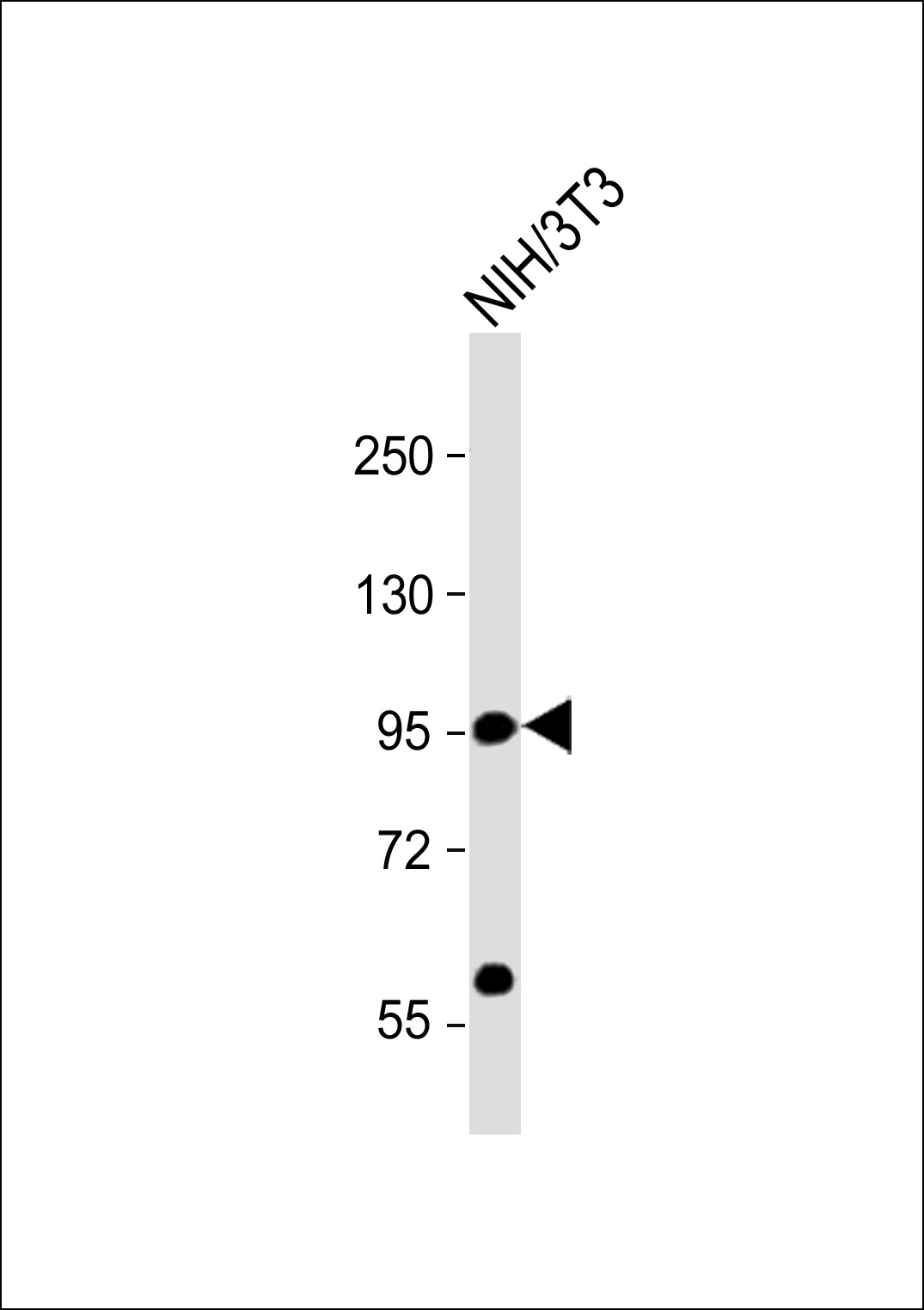CD34 Antibody (Center)
Purified Mouse Monoclonal Antibody (Mab)
- SPECIFICATION
- CITATIONS: 3
- PROTOCOLS
- BACKGROUND

Application
| WB, IHC-P, IHC-P-Leica, E |
|---|---|
| Primary Accession | P28906 |
| Other Accession | NP_001764 |
| Reactivity | Human |
| Host | Mouse |
| Clonality | Monoclonal |
| Isotype | IgG1κ |
| Clone/Animal Names | 132CT29.1.5 |
| Calculated MW | 40716 Da |
| Antigen Region | 185-214 aa |
| Gene ID | 947 |
|---|---|
| Other Names | Hematopoietic progenitor cell antigen CD34, CD34, CD34 |
| Target/Specificity | This CD34 antibody is generated from mice immunized with a KLH conjugated synthetic peptide between 185-214 amino acids from the Central region of human CD34. |
| Dilution | WB~~1:1000 IHC-P~~N/A IHC-P-Leica~~1:1000 E~~Use at an assay dependent concentration. |
| Format | Purified monoclonal antibody supplied in PBS with 0.09% (W/V) sodium azide. This antibody is purified through a protein G column, followed by dialysis against PBS. |
| Storage | Maintain refrigerated at 2-8°C for up to 2 weeks. For long term storage store at -20°C in small aliquots to prevent freeze-thaw cycles. |
| Precautions | CD34 Antibody (Center) is for research use only and not for use in diagnostic or therapeutic procedures. |
| Name | CD34 |
|---|---|
| Function | Possible adhesion molecule with a role in early hematopoiesis by mediating the attachment of stem cells to the bone marrow extracellular matrix or directly to stromal cells. Could act as a scaffold for the attachment of lineage specific glycans, allowing stem cells to bind to lectins expressed by stromal cells or other marrow components. Presents carbohydrate ligands to selectins. |
| Cellular Location | Membrane; Single-pass type I membrane protein. |
| Tissue Location | Selectively expressed on hematopoietic progenitor cells and the small vessel endothelium of a variety of tissues |

Provided below are standard protocols that you may find useful for product applications.
Background
CD34 is a monomeric cell surface antigen with a molecular mass of approximately 110 kD that is selectively expressed on human hematopoietic progenitor cells.
References
Genome-wide association analysis identifies multiple loci related to resting heart rate. Eijgelsheim M, et al. Hum Mol Genet, 2010 Oct 1. PMID 20639392. The effect of CXCL12 processing on CD34+ cell migration in myeloproliferative neoplasms. Cho SY, et al. Cancer Res, 2010 Apr 15. PMID 20388788. Personalized smoking cessation: interactions between nicotine dose, dependence and quit-success genotype score. Rose JE, et al. Mol Med, 2010 Jul-Aug. PMID 20379614. Junctional adhesion molecule A expressed on human CD34+ cells promotes adhesion on vascular wall and differentiation into endothelial progenitor cells. Stellos K, et al. Arterioscler Thromb Vasc Biol, 2010 Jun. PMID 20378847. Human gallbladder carcinoma: Role of neurotrophins, MIB-1, CD34 and CA15-3. Artico M, et al. Eur J Histochem, 2010 Mar 11. PMID 20353905.
If you have used an Abcepta product and would like to share how it has performed, please click on the "Submit Review" button and provide the requested information. Our staff will examine and post your review and contact you if needed.
If you have any additional inquiries please email technical services at tech@abcepta.com.














 Foundational characteristics of cancer include proliferation, angiogenesis, migration, evasion of apoptosis, and cellular immortality. Find key markers for these cellular processes and antibodies to detect them.
Foundational characteristics of cancer include proliferation, angiogenesis, migration, evasion of apoptosis, and cellular immortality. Find key markers for these cellular processes and antibodies to detect them. The SUMOplot™ Analysis Program predicts and scores sumoylation sites in your protein. SUMOylation is a post-translational modification involved in various cellular processes, such as nuclear-cytosolic transport, transcriptional regulation, apoptosis, protein stability, response to stress, and progression through the cell cycle.
The SUMOplot™ Analysis Program predicts and scores sumoylation sites in your protein. SUMOylation is a post-translational modification involved in various cellular processes, such as nuclear-cytosolic transport, transcriptional regulation, apoptosis, protein stability, response to stress, and progression through the cell cycle. The Autophagy Receptor Motif Plotter predicts and scores autophagy receptor binding sites in your protein. Identifying proteins connected to this pathway is critical to understanding the role of autophagy in physiological as well as pathological processes such as development, differentiation, neurodegenerative diseases, stress, infection, and cancer.
The Autophagy Receptor Motif Plotter predicts and scores autophagy receptor binding sites in your protein. Identifying proteins connected to this pathway is critical to understanding the role of autophagy in physiological as well as pathological processes such as development, differentiation, neurodegenerative diseases, stress, infection, and cancer.



